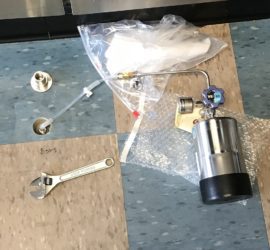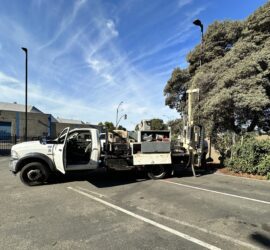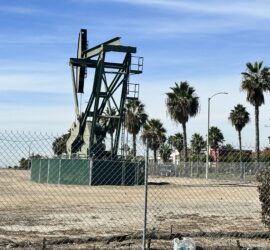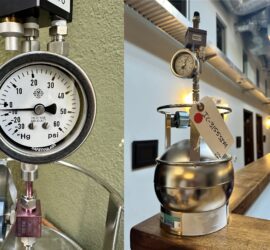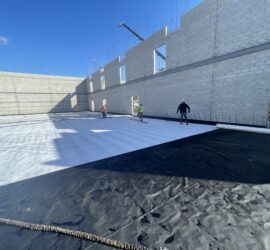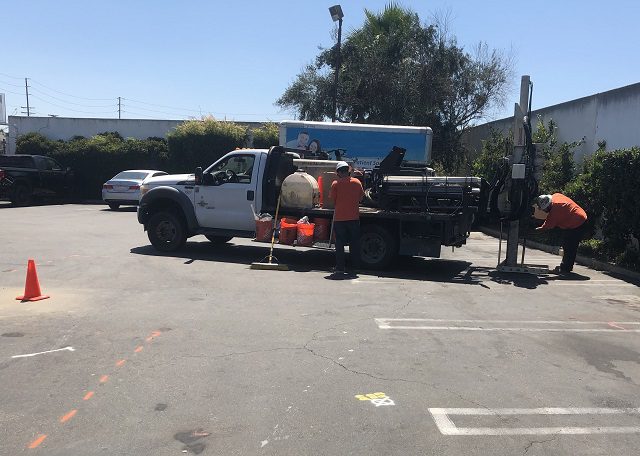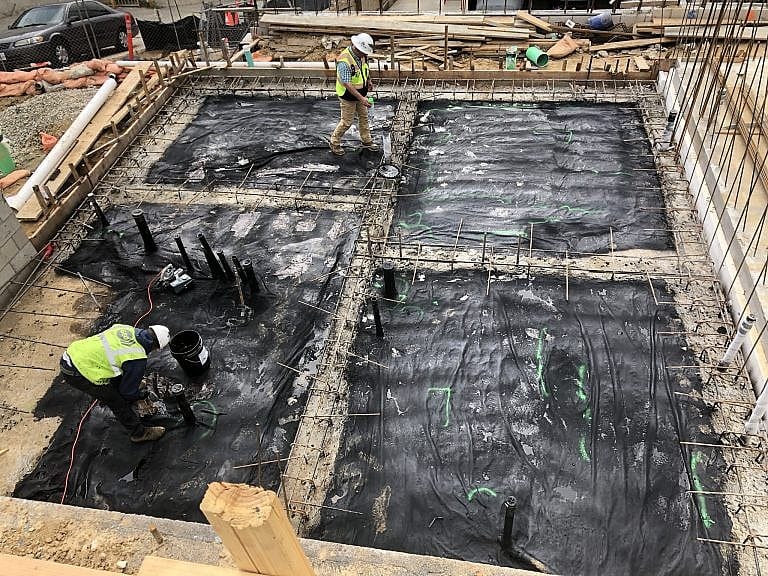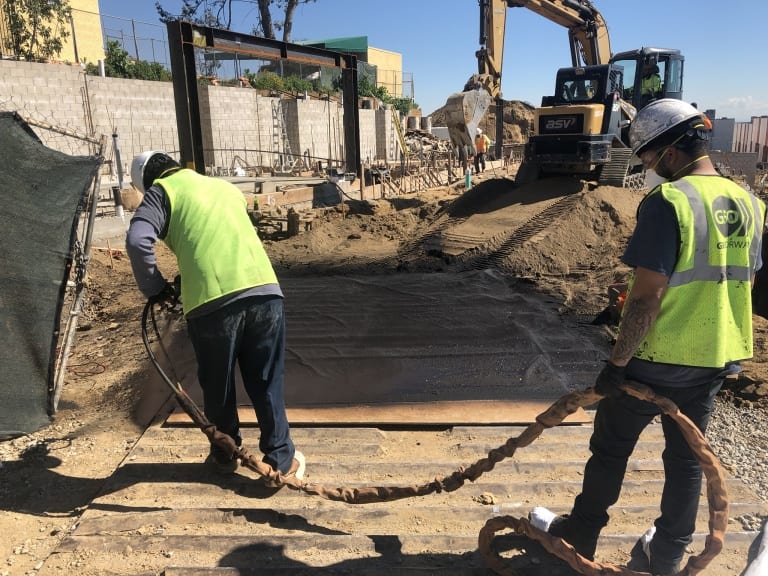City of Signal Hill Methane Gas Zone Mitigation
The Signal Hill Methane Gas Zone is a large area with an abundance of natural gas underground. And development projects within Signal Hill Methane Zones are subject to methane soil testing and methane mitigation systems. This process is overseen by the City of Signal Hill Building Safety Department and requires the efforts of professional geologists, engineers, and vapor barrier contractors. Updated April 17, 2024.
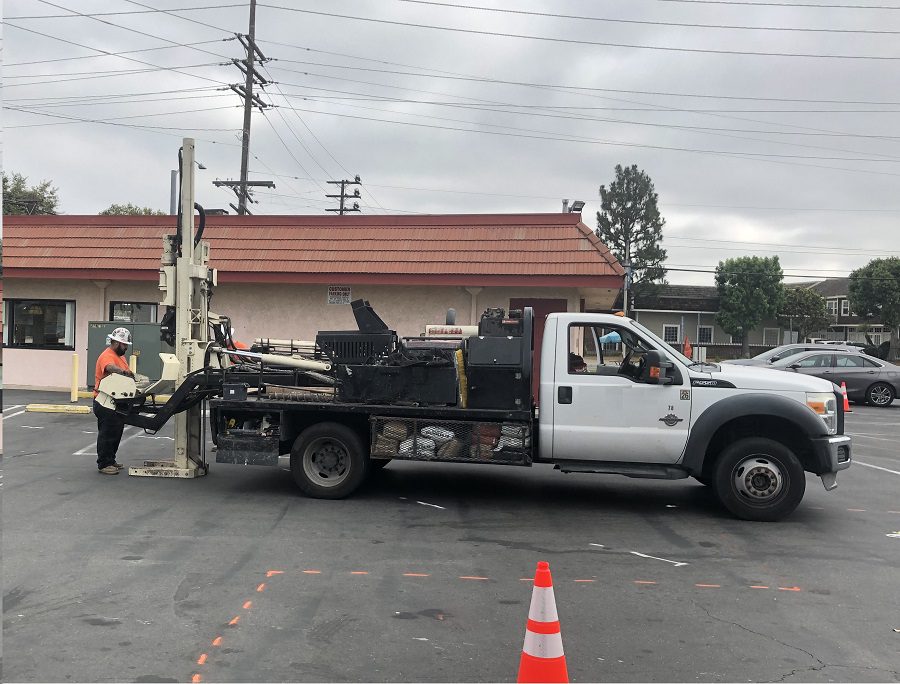
Source of Signal Hill Methane Soil Gas Hazards
Originating from the Long Beach Oil Field, decomposing petroleum deposits (and landfills) release combustible biogenic and petrogenic gases. These gases can linger in the subsurface, and move laterally or vertically through geological formations. In fact, surrounding cities, such as Los Angeles and Long Beach also have Methane Hazard Zones and Methane Buffer Zones.
What to Expect When Building in the Signal Hill Methane Zone
The City of Signal Hill methane gas zone guideline is similar to the Los Angeles Building Department’s Methane Code. In the “City of Signal Hill Project Development Guide 2022”, as well as the “City of Signal Hill General Plan 2016,” methane testing requirements are outlined per the City’s Oil and Gas Code, which was updated in 2015. Similarly, the California Department of Toxic Substance Control (DTSC) maintains vapor intrusion sampling and mitigation guidelines. This ultimately applies to construction and development projects in natural gas hazard areas. For instance, an accessory dwelling unit project within a methane zone property.
Signal Hill City Building Permit for Methane Gas Mitigation Zone Projects
Long Beach and Signal Hill have a rich history of crude oil and natural gas production. And sites with former oil wells have specific requirements for methane testing and mitigation. However, per Signal Hill Municipal Code (16.24.080) a methane assessment is also necessary for sites within proximity to former oil wells.
Methane Assessment Work Plan
Prior to the Signal Hill Methane Testing process, a “Methane Assessment Permit,” and “Methane Assessment Work Plan” are required. Afterward, a “Methane Assessment Report” by a California professional geologist is subject to review by the Oil Services Coordinator.
Signal Hill Methane Test & Mitigation Plan Requirements for Building Permits
Per City codes, projects within the Signal Hill Methane Gas Zone require a methane soil-gas survey and a mitigation plan. And these reports and plans must be in place prior to the permit check process.
2022 City of Signal Hill Project Development Guide
The City’s Project Development Guide provides an overview of general requirements for methane assessment and mitigation in Signal Hill. Additionally, it specifies methane soil gas mitigation procedures for properties with historical oil wells on-site. The Project Development Guide also provides an outline of City fees for methane testing permits and methane mitigation plan review. Moreover, it describes the requirements for the Signal Hill methane assessment work plan and subsequent methane investigating report. Lastly, the document includes methane mitigation standards which are based on the Los Angeles Building Department Standards. The “City of Signal Hill Project Development Guide, 2022” is a useful resource for anyone navigating the process of building in the Signal Hill Methane Zone.
2016 City Of Signal Hill General Plan, Safety Element
The City’s General Plan defines which agencies have oversight with respect to oil and gas, as well as other hazards. And the Safety Element provides a thorough background of what methane is and where it comes from. Additionally, it covers the history of the City Municipal Code as it relates to methane. The General Plan confirms that “all properties in the City, whether or not they contain oil wells, shall be tested for methane gas…” Lastly, the Safety Element also describes the development process for building on a property with an abandoned well. The City of Signal Hill General Plan, Safety Element is an additional document to reference before any development project in the Signal Hill Methane Zone.
Signal Hill Methane Zone
The potential for high concentrations of methane soil gas in the Signal Hill Methane Zone presents an explosion hazard to structures. This is because methane gas is flammable at concentrations exceeding 50,000 parts per million by volume (ppmv). And, methane soil gas can rise up from the subsurface and accumulate inside buildings, presenting a fire hazard if not depressurized. Additionally, methane gas build-up inside the lowest occupied space presents a risk of oxygen displacement in breathing space.
Because the City of Signal Hill is built over a producing oil field (Long Beach Oil Field), the areas mapped in red below are reasonably presumed to comprise unsafe levels of methane soil gas.
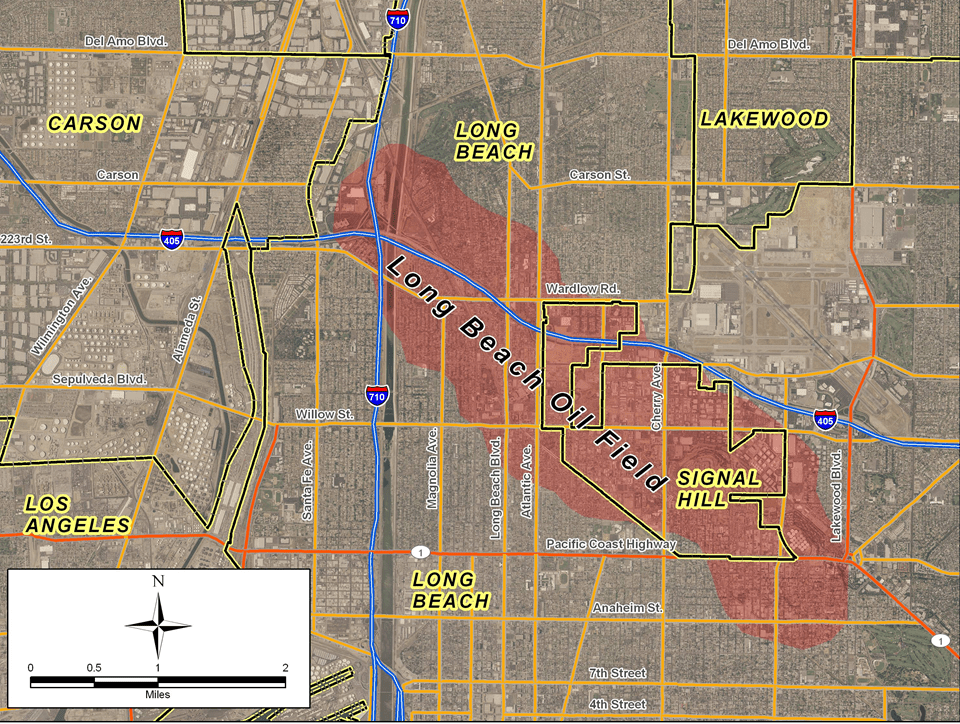
Signal Hill Methane Testing
The Signal Hill Methane Soil Gas Assessment entails drilling at multiple locations on a property and installing soil-vapor probes at various depths. Environmental professionals and geologists then collect samples and analyze them for combustible petroleum hydrocarbons. The results of the methane test provide vapor intrusion engineers with parameters for passive mitigation and active mitigation measures.
City of Signal Hill Methane Gas Mitigation System in New Buildings
The purpose of building a methane mitigation system within the Signal Hill Methane Gas Zone is to protect building occupants and preserve indoor air quality. As of now, the city follows the Los Angeles Department of Building and Safety standards for methane site testing and mitigation. However, the organization of the requirements is slightly different. For instance, sites with low methane concentrations still maintain requirements for passive mitigation systems. Whereas some sites with higher methane concentrations may qualify for the implementation of “modified” active systems.

